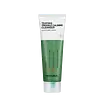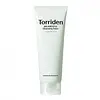What's inside
What's inside
 Key Ingredients
Key Ingredients

 Benefits
Benefits

 Concerns
Concerns

 Ingredients Side-by-side
Ingredients Side-by-side

Water
Skin ConditioningGlycerin
HumectantMyristic Acid
CleansingStearic Acid
CleansingLauric Acid
CleansingPotassium Hydroxide
BufferingButylene Glycol
HumectantGlycol Distearate
EmollientGlyceryl Stearate Se
EmulsifyingSorbitan Olivate
EmulsifyingBeeswax
Emulsion StabilisingPotassium Cocoyl Glycinate
Caprylyl Glycol
EmollientCoco-Betaine
CleansingMelaleuca Alternifolia Leaf Oil
AntioxidantSodium Chloride
MaskingArtemisia Vulgaris Oil
PerfumingEthylhexylglycerin
Skin ConditioningLavandula Angustifolia Oil
MaskingCitric Acid
BufferingMelaleuca Alternifolia Leaf Extract
PerfumingCapryloyl Salicylic Acid
Exfoliating1,2-Hexanediol
Skin ConditioningMelaleuca Alternifolia Leaf Water
AntimicrobialMannitol
HumectantSodium Hyaluronate
HumectantKaolin
AbrasivePapain
Skin ConditioningHydrolyzed Hyaluronic Acid
HumectantBromelain
Skin ConditioningLactobacillus Ferment
Skin ConditioningSodium Acetylated Hyaluronate
HumectantHydrogenated Lecithin
EmulsifyingWater, Glycerin, Myristic Acid, Stearic Acid, Lauric Acid, Potassium Hydroxide, Butylene Glycol, Glycol Distearate, Glyceryl Stearate Se, Sorbitan Olivate, Beeswax, Potassium Cocoyl Glycinate, Caprylyl Glycol, Coco-Betaine, Melaleuca Alternifolia Leaf Oil, Sodium Chloride, Artemisia Vulgaris Oil, Ethylhexylglycerin, Lavandula Angustifolia Oil, Citric Acid, Melaleuca Alternifolia Leaf Extract, Capryloyl Salicylic Acid, 1,2-Hexanediol, Melaleuca Alternifolia Leaf Water, Mannitol, Sodium Hyaluronate, Kaolin, Papain, Hydrolyzed Hyaluronic Acid, Bromelain, Lactobacillus Ferment, Sodium Acetylated Hyaluronate, Hydrogenated Lecithin
Water
Skin ConditioningGlycerin
HumectantStearic Acid
CleansingLauric Acid
CleansingPotassium Hydroxide
BufferingPotassium Cocoyl Glycinate
Dipropylene Glycol
HumectantPotassium Cocoate
EmulsifyingGlyceryl Stearate Se
EmulsifyingLauryl Glucoside
CleansingSalicylic Acid
MaskingCentella Asiatica Extract
CleansingMadecassoside
AntioxidantAsiaticoside
AntioxidantAsiatic Acid
Skin ConditioningMadecassic Acid
Skin ConditioningPanthenol
Skin ConditioningGluconolactone
Skin ConditioningAllantoin
Skin ConditioningTocopherol
AntioxidantAlthaea Rosea Flower Extract
Skin ConditioningNymphaea Caerulea Flower Extract
Skin ConditioningLactobacillus Ferment
Skin ConditioningSwertia Japonica Extract
Skin ConditioningPentylene Glycol
Skin ConditioningButylene Glycol
HumectantSodium Cocoyl Isethionate
CleansingSodium Isethionate
CleansingCaprylyl Glycol
EmollientDisodium EDTA
Dextrin
AbsorbentSodium Benzoate
MaskingCoconut Acid
CleansingEthylhexylglycerin
Skin ConditioningPolyquaternium-7
1,2-Hexanediol
Skin ConditioningRosmarinus Officinalis Leaf Oil
MaskingDecyl Glucoside
CleansingGardenia Florida Fruit Extract
Skin ConditioningCarthamus Tinctorius Flower Extract
Skin ConditioningWater, Glycerin, Stearic Acid, Lauric Acid, Potassium Hydroxide, Potassium Cocoyl Glycinate, Dipropylene Glycol, Potassium Cocoate, Glyceryl Stearate Se, Lauryl Glucoside, Salicylic Acid, Centella Asiatica Extract, Madecassoside, Asiaticoside, Asiatic Acid, Madecassic Acid, Panthenol, Gluconolactone, Allantoin, Tocopherol, Althaea Rosea Flower Extract, Nymphaea Caerulea Flower Extract, Lactobacillus Ferment, Swertia Japonica Extract, Pentylene Glycol, Butylene Glycol, Sodium Cocoyl Isethionate, Sodium Isethionate, Caprylyl Glycol, Disodium EDTA, Dextrin, Sodium Benzoate, Coconut Acid, Ethylhexylglycerin, Polyquaternium-7, 1,2-Hexanediol, Rosmarinus Officinalis Leaf Oil, Decyl Glucoside, Gardenia Florida Fruit Extract, Carthamus Tinctorius Flower Extract
 Reviews
Reviews

Ingredients Explained
These ingredients are found in both products.
Ingredients higher up in an ingredient list are typically present in a larger amount.
1,2-Hexanediol is a synthetic liquid and another multi-functional powerhouse.
It is a:
- Humectant, drawing moisture into the skin
- Emollient, helping to soften skin
- Solvent, dispersing and stabilizing formulas
- Preservative booster, enhancing the antimicrobial activity of other preservatives
Butylene Glycol (or BG) is used within cosmetic products for a few different reasons:
Overall, Butylene Glycol is a safe and well-rounded ingredient that works well with other ingredients.
Though this ingredient works well with most skin types, some people with sensitive skin may experience a reaction such as allergic rashes, closed comedones, or itchiness.
Learn more about Butylene GlycolCaprylyl Glycol is a humectant and emollient, meaning it attracts and preserves moisture.
It is a common ingredient in many products, especially those designed to hydrate skin. The primary benefits are retaining moisture, skin softening, and promoting a healthy skin barrier.
Though Caprylyl Glycol is an alcohol derived from fatty acids, it is not the kind that can dry out skin.
This ingredient is also used as a preservative to extend the life of products. It has slight antimicrobial properties.
Learn more about Caprylyl GlycolEthylhexylglycerin (we can't pronounce this either) is commonly used as a preservative and skin softener. It is derived from glyceryl.
You might see Ethylhexylglycerin often paired with other preservatives such as phenoxyethanol. Ethylhexylglycerin has been found to increase the effectiveness of these other preservatives.
Glycerin is already naturally found in your skin. It helps moisturize and protect your skin.
A study from 2016 found glycerin to be more effective as a humectant than AHAs and hyaluronic acid.
As a humectant, it helps the skin stay hydrated by pulling moisture to your skin. The low molecular weight of glycerin allows it to pull moisture into the deeper layers of your skin.
Hydrated skin improves your skin barrier; Your skin barrier helps protect against irritants and bacteria.
Glycerin has also been found to have antimicrobial and antiviral properties. Due to these properties, glycerin is often used in wound and burn treatments.
In cosmetics, glycerin is usually derived from plants such as soybean or palm. However, it can also be sourced from animals, such as tallow or animal fat.
This ingredient is organic, colorless, odorless, and non-toxic.
Glycerin is the name for this ingredient in American English. British English uses Glycerol/Glycerine.
Learn more about GlycerinGlyceryl Stearate Se is a self-emulsifying (SE) form of glyceryl stearate. Self-emusifying means this ingredient automatically blends with water. It is an emulsifier, emollient, and cleansing agent.
As an emulsifier, Glyceryl Stearate Se prevents ingredients such as oil and water from separating. It is also a surfactant, meaning it helps cleanse the skin. Surfactants help gather oil, dirt, and other pollutants so they may be rinsed away easily.
Emollients help your skin stay smooth and soft. It does so by creating a film on top of the skin that helps trap moisture in.
Learn more about Glyceryl Stearate SeLactobacillus Ferment is created by fermenting the Lactobacillus bacteria. It helps keep our skin's natural barrier and microbiome healthy.
Studies show lactobacillus ferment to be effective at repairing the skin barrier. Having a healthy skin barrier helps keep your skin healthy and hydrated. It also protects against bad bacteria.
As a probiotic/prebiotic/postbiotic, Lactobacillus ferment can help regular our natural biome. In fact, one study found a lack of diversity in our natural skin biome can trigger acne.
Learn more about Lactobacillus FermentLauric Acid is a fatty acid or lipid. About half of fatty acids in coconut oil is lauric acid.
This ingredient helps hydrate and sooth skin. As a humectant, it helps trap moisture. It also aids in cleaning and enhancing the texture of products.
Lauric acid may not be Malassezia folliculitis, or fungal acne, safe.
Learn more about Lauric AcidPotassium Cocoyl Glycinate is an amino acid-based surfactant and cleaning agent. This ingredient can be derived from animals or plants. It may also be synthetically created from fatty acids of the coconut and glycine.
Potassium Cocoyl Glycinate is a gentle surfactant. Surfactants help gather the dirt, oil, and other pollutants from your skin to be rinsed away. It is a mild cleanser and naturally produces foam.
Potassium hydroxide is commonly known as caustic potash. It is used to fix the pH of a product or as a cleaning agent in soap. In cleansers, it is used for the saponification of oils.
Sapnification is the process of creating fatty acid metal salts from triglycerides and a strong base. During this process, Potassium Hydroxide is used up and is not present in the final product.
Using high concentrations of Potassium Hydroxide have shown to irritate the skin.
Learn more about Potassium HydroxideStearic Acid is a fatty acid. It is an emollient, emulsifier, and texture enhancer.
As an emollient, stearic acid helps soften skin. It aids the skin's protective barrier by preventing water loss. It also provides a gentle cleansing effect without stripping away natural oils.
Stearic acid may also be used to enhance the texture of products. It can add volume and stabilize ingredients such as water and oil. This can help water and oil ingredients from separating.
Sources of stearic acid include animal or vegetable fats/oils such as coconut or shea. It can be naturally found in butter, cocoa butter, shea butter, vegetable fats, and animal tallow.
This ingredient may not be Malassezia folliculitis, or fungal-acne safe.
Learn more about Stearic AcidWater. It's the most common cosmetic ingredient of all. You'll usually see it at the top of ingredient lists, meaning that it makes up the largest part of the product.
So why is it so popular? Water most often acts as a solvent - this means that it helps dissolve other ingredients into the formulation.
You'll also recognize water as that liquid we all need to stay alive. If you see this, drink a glass of water. Stay hydrated!
Learn more about Water